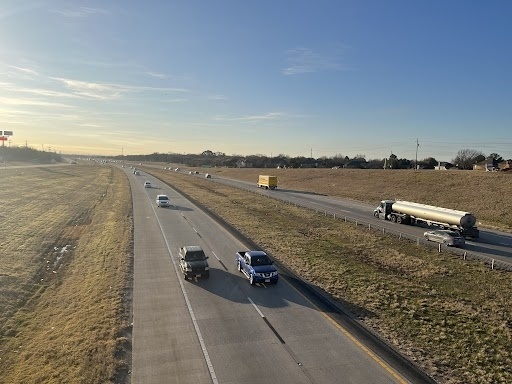The report started in 2009 and rates the 100 busiest segments of roadways in the state with a study looking at congestion and the delay it costs in terms of time spent stuck in gridlock. There were 1,860 roadways in 23 urban areas that were reviewed during the study—funded by the Texas Department of Transportation—which looked at how much longer drivers were on the road in traffic jams, compared to uncongested conditions.
According to the Texas A&M Transportation Initiative, Tarrant County had 11 of the top 100 busiest stretches of roadway in the state – eight of which were busier in 2021 than 2020.
The delays have a large financial impact. According to research, a total of $3.8 billion was lost between wasted fuel and lost time in 2021. Truck congestion costs were $620 million.
The 2021 numbers showed an increase but the report stated the COVID-19 effects still had conditions below the pre-pandemic congestion. The West Loop in Houston was the most gridlocked stretch in 2021 for the second year in a row and eight of the top 10 remained unchanged from the previous two years. Researchers emphasized that traffic will eventually return to familiar intensity as the state’s population grows and its economy recovers, according to a press release.
“Traffic congestion isn’t just a big-city problem, and that problem is almost sure to get worse as our population surges by almost 20 million in the next 25 years,” said David Schrank, TTI’s lead researcher on the annual study. “With that kind of growth, Texas needs to use every possible means to keep people and goods moving. We need to add capacity, operate the system efficiently, and give people options for how to travel.”
The Dallas-Fort Worth area accounted for 37 of the top 100 busiest roadways – up from 34 in 2021. Tarrant County lays claim to 11 of the top 100 busiest roadways in Texas, including three in the top 25. I-35W between SH 183 and I-30 was sixth—up three spots—with more than 814,000 hours of delays and more than $70 million lost due to congestion.
At 14th was I-35W between SH 183 and Hwy. 287, a jump of 20 spots. The annual cost was more than $80 million and saw more 480 hours of delays.
The section of I-820 between I-35W and SH 183 saw a meteoric rise from 1,430th in 2020 to 23rd in 2021. There were more than 334,000 hours of delays with an estimated cost of $56 million.
The study says to help alleviate the issues, roads will need to be built at a brisk pace. The Texas Clear Lane initiative from TxDOT has been assigned $29 billion to work on non-tolled projects in the four metro areas. There are 27 construction projects underway and 58 planned.
“Texas Clear Lanes is paying off in a big way, as we estimate $4 in benefits for every $1 spent on road expansion projects,” TxDOT Executive Director Marc Williams said in a press release. “That helps us achieve our mission – connecting Texans with their state. TxDOT is all about making personal travel safer and smoother, along with efficiently moving freight to support greater supply chain efficiency and economic growth.”





